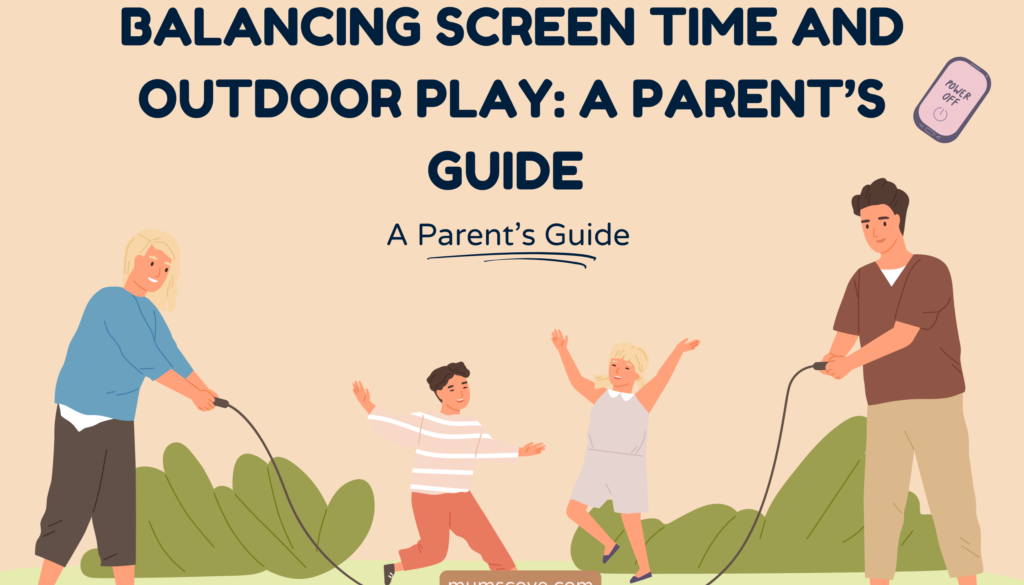Balancing Screen Time and Outdoor Play: A Parent’s Guide
The Screen Time Dilemma
In today’s digital world, children are glued to screens more than ever—whether for school, entertainment, or socializing. While technology offers educational benefits, excessive screen time can harm physical health, mental well-being, and social development.
As parents, finding the right balance between screen time and outdoor play is crucial. This guide provides practical, science-backed strategies to help your child enjoy technology while staying active, creative, and healthy.
Why Balancing Screen Time and Outdoor Play Matters
The Impact of Excessive Screen Time
-
Physical Health Risks: Sedentary behavior linked to obesity, poor posture, and sleep disruption.
-
Mental Health Concerns: Increased anxiety, attention issues, and reduced social skills.
-
Developmental Delays: Limited hands-on learning and creativity.

The Benefits of Outdoor Play
-
Boosts Physical Fitness: Strengthens muscles, improves coordination, and enhances cardiovascular health.
-
Enhances Cognitive Skills: Encourages problem-solving, imagination, and risk assessment.
-
Supports Emotional Well-being: Reduces stress and fosters social interactions.
(Stat: According to the American Academy of Pediatrics, children aged 6+ should have consistent limits on screen time to ensure adequate physical activity.)
How to Set Healthy Screen Time Limits
1. Establish Clear Rules
-
Use the “1:1 Rule”—1 hour of screen time = 1 hour of outdoor play.
-
Set tech-free zones (e.g., dining table, bedrooms).
2. Use Parental Controls Wisely
-
Leverage apps like Screen Time (iOS) or Google Family Link to monitor usage.
-
Schedule automatic shut-offs to encourage breaks.
3. Lead by Example
-
Reduce your own screen time to model balanced behavior.
-
Engage in family outdoor activities (hiking, biking, gardening).
Encouraging Outdoor Play: Fun & Engaging Ideas
1. Make Outdoor Time Exciting
-
Scavenger hunts (nature-themed lists)
-
DIY obstacle courses (jump ropes, hula hoops)
-
Sports & group games (soccer, tag, frisbee)
2. Combine Tech with Nature
-
Use educational apps like Geocaching for outdoor adventures.
-
Try nature photography challenges to blend creativity with exploration.
3. Create a Routine
-
Dedicate 30-60 minutes daily for unstructured outdoor play.
Overcoming Common Challenges
“My Child Refuses to Go Outside!”
-
Start small—10-minute walks and gradually increase.
-
Let them choose activities they enjoy.
“Bad Weather Ruins Outdoor Plans”
-
Indoor alternatives: dance parties, yoga, or DIY crafts.
-
Invest in weather-appropriate gear (raincoats, snow boots).
Expert Tips for Long-Term Success
-
Involve kids in setting screen time rules—they’ll be more likely to follow them.
-
Track progress with a family chart or rewards system.
-
Stay flexible—adjust rules as kids grow and interests change.
Final Thoughts: Finding the Right Balance
Balancing screen time and outdoor play isn’t about strict bans—it’s about creating healthy habits. By setting limits, encouraging physical activity, and leading by example, you’ll help your child thrive both online and offline.
What’s your biggest struggle with screen time? Share in the comments!




